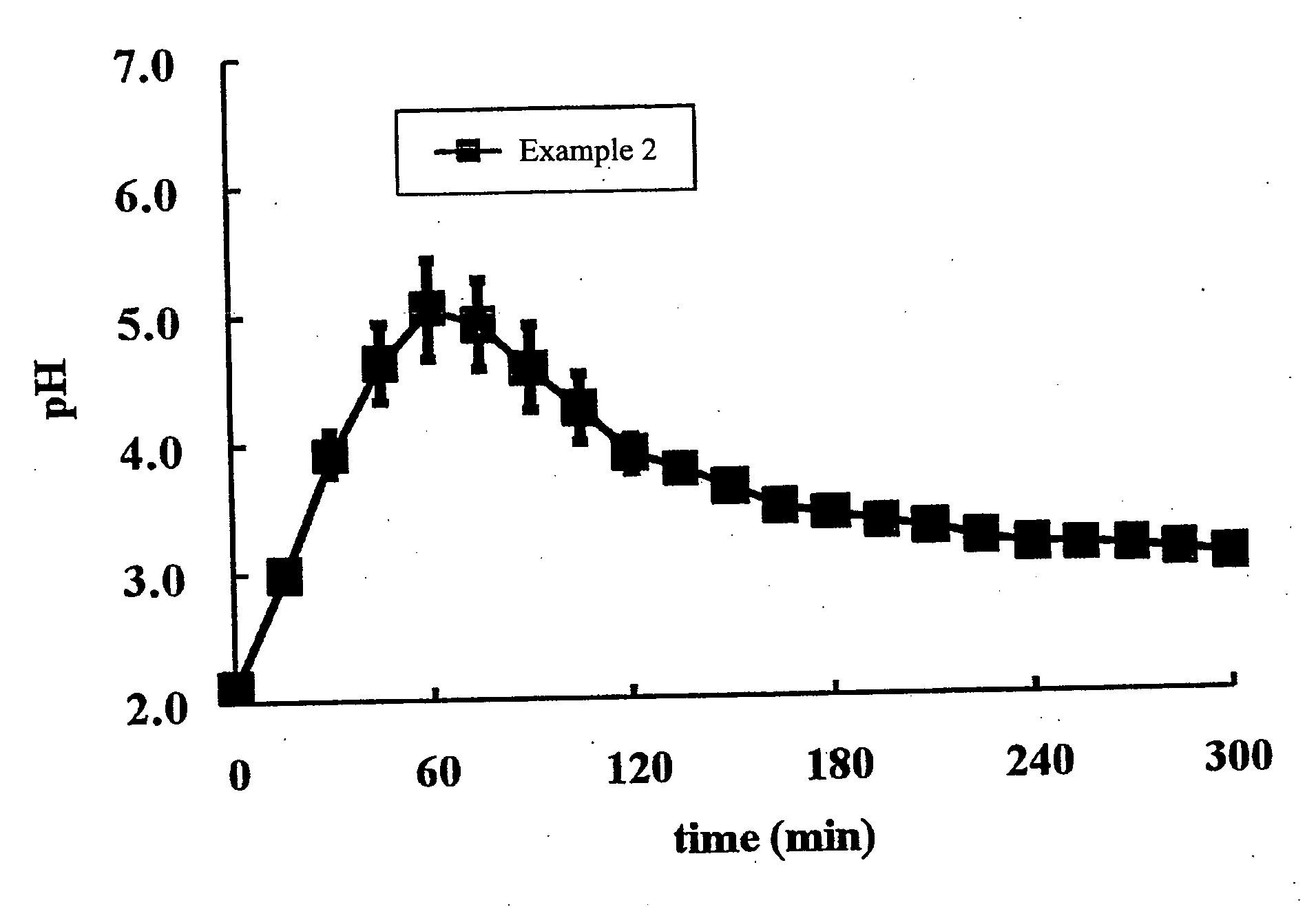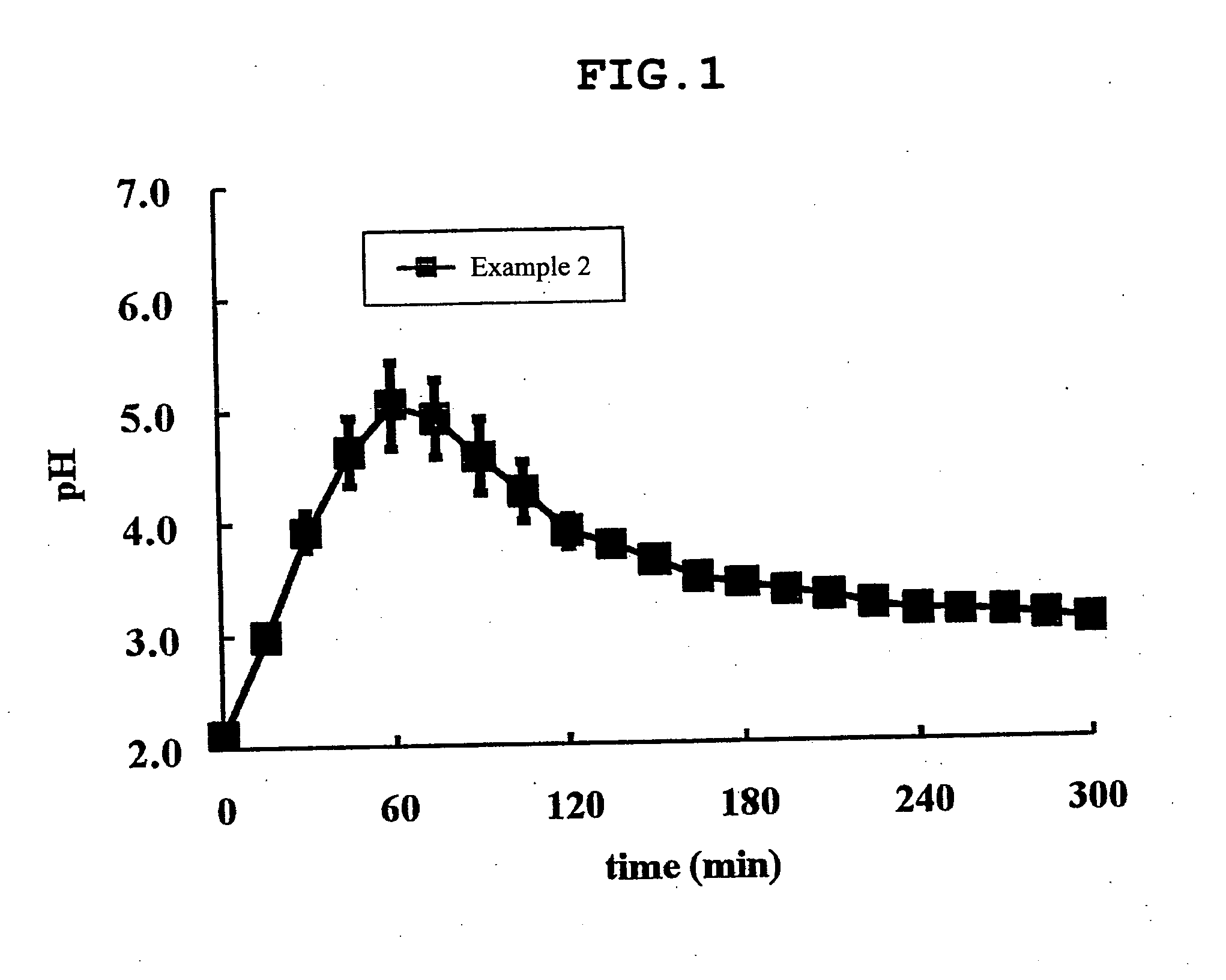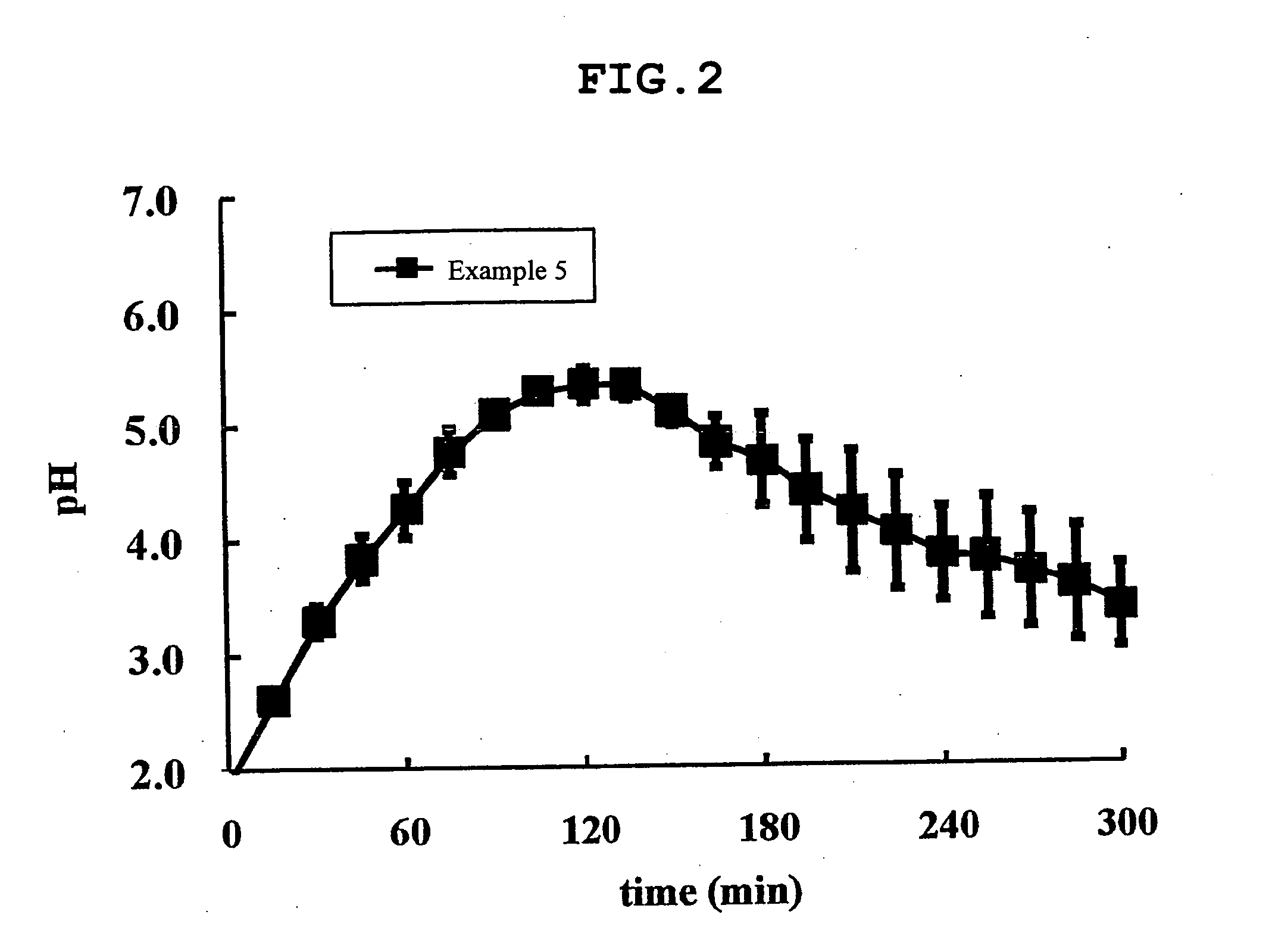Pyrrole compounds
- Summary
- Abstract
- Description
- Claims
- Application Information
AI Technical Summary
Benefits of technology
Problems solved by technology
Method used
Image
Examples
reference example 1
tert-Butyl (2-oxoethyl)carbamate
[0149]To a mixed solution of tert-butyl (2-hydroxyethyl)carbamate (10.0 g) in dimethyl sulfoxide (50 mL) and triethylamine (12.3 g) was added sulfur trioxide pyridine complex (15.0 g) under ice-cooling, and the mixture was stirred for 1 hr. The reaction mixture was further stirred at room temperature for 3 hr, 1 mol / L hydrochloric acid was added, and the mixture was extracted with ethyl acetate. The separated aqueous layer was extracted again with ethyl acetate. The combined organic layers were washed with saturated brine, dried over magnesium sulfate and concentrated under reduced pressure. The residue was purified by silica gel column chromatography (eluent:hexane-ethyl acetate=17:3→13:7) to give the title compound as a pale-yellow oil (yield 6.50 g, 66%).
[0150]1H-NMR (CDCl3) δ: 1.46 (9H, s), 4.08 (2H, d, J=4.5 Hz), 5.19 (1H, brs), 9.66 (1H, s).
reference example 2
Ethyl 4-[(tert-butoxycarbonyl)amino]-2,2-difluoro-3-{[(4-methylphenyl)sulfonyl]oxy}butanoate
[0151]Zinc powder (23.0 g) was washed with 0.1 mol / L hydrochloric acid, ethanol and diethyl ether, and dried under reduced pressure. Under an argon atmosphere, to a suspension of washed zinc powder in tetrahydrofuran (300 mL) was added a solution of tert-butyl (2-oxoethyl)carbamate (35.0 g) in tetrahydrofuran (50 mL), ethyl bromodifluoroacetate (75.9 g) was gradually added dropwise under ice-cooling, and the mixture was stirred for 15 min. 1 mol / L Hydrochloric acid was added to the reaction mixture, and the mixture was extracted with ethyl acetate. The separated aqueous layer was extracted again with ethyl acetate. Combined organic layers were washed with saturated aqueous sodium hydrogen carbonate solution, water and saturated brine, dried over anhydrous magnesium sulfate and concentrated under reduced pressure. The residue was dissolved in a mixed solution of tetrahydrofuran (30 mL) and pyr...
reference example 3
tert-Butyl 3,3-difluoro-4-{[(4-methylphenyl)sulfonyl]oxy}-2-oxopyrrolidine-1-carboxylate
[0153]To a solution of ethyl 4-[(tert-butoxycarbonyl)amino]-2,2-difluoro-3-{[(4-methylphenyl)sulfonyl]oxy}butanoate (44.8 g) in ethyl acetate (50 mL) was added 4 mol / L hydrogen chloride-ethyl acetate solution (100 mL), and the mixture was stirred for 3 hr. The reaction mixture was concentrated under reduced pressure, and the residue was azeotropically distilled twice with toluene. The obtained mixture was dissolved in acetonitrile (20 mL), triethylamine (15.6 g) was added, and the mixture was stirred for 3 hr. Di-tert-butyl bicarbonate (33.6 g) and 4-dimethylaminopyridine (3.76 g) were added at room temperature and the mixture was stirred for 1 hr. The reaction mixture was concentrated under reduced pressure, and the residue was dissolved in ethyl acetate, and washed with 1 mol / L hydrochloric acid. The separated aqueous layer was extracted again with ethyl acetate. Combined organic layers were wa...
PUM
| Property | Measurement | Unit |
|---|---|---|
| Fraction | aaaaa | aaaaa |
| Fraction | aaaaa | aaaaa |
| Fraction | aaaaa | aaaaa |
Abstract
Description
Claims
Application Information
 Login to View More
Login to View More - R&D
- Intellectual Property
- Life Sciences
- Materials
- Tech Scout
- Unparalleled Data Quality
- Higher Quality Content
- 60% Fewer Hallucinations
Browse by: Latest US Patents, China's latest patents, Technical Efficacy Thesaurus, Application Domain, Technology Topic, Popular Technical Reports.
© 2025 PatSnap. All rights reserved.Legal|Privacy policy|Modern Slavery Act Transparency Statement|Sitemap|About US| Contact US: help@patsnap.com



